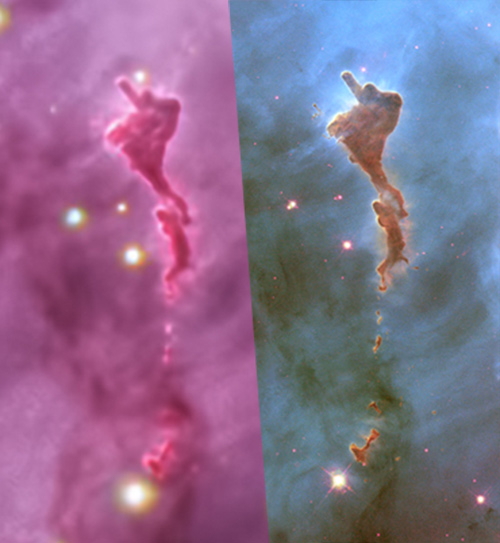
Bright Globlules near the Keyhole nebula

Hubble vs Alluna.
Equipment setup
Alluna optics
SBIG
Baader Planetarium
Takahashi
Takahashi Collimating telescope
Software Bisque
Credit Left: Peter J Ward using all the above
Credit right : Hubble Space Telescope
NASA/ESA, The Hubble Heritage Team (AURA/STScI)
" The pronounced pillars and knobs of the upper left...appear to point toward a luminous, massive star
located just outside the field further toward the upper left,
which may be responsible for illuminating and sculpting them
by means of its high-energy radiation and stellar wind of high-velocity ejected material.
These large dark clouds may eventually evaporate,
or if there are sufficiently dense condensations within them, give birth to small star clusters."
A 2.4 metre telescope under perfect seeing in orbit reveals many fine details within
tiny objects, well, actually, no, that's wrong.
They are really big: to quote from the Holy Book of Adams
“Space,” it says, “is big. Really big. You just won’t believe how vastly, hugely, mindbogglingly big it is.
I mean, you may think it’s a long way down the road to the chemist’s, but that’s just peanuts to space.”
Anyway this actually doesn't help ESA/NASA to verify features captured by a much smaller telescope in a suburban backyard,
well, probably because they have the telescope in orbit and don't need to check.
Copyright Peter J Ward 2016

Can you see all 26 grey scales above?